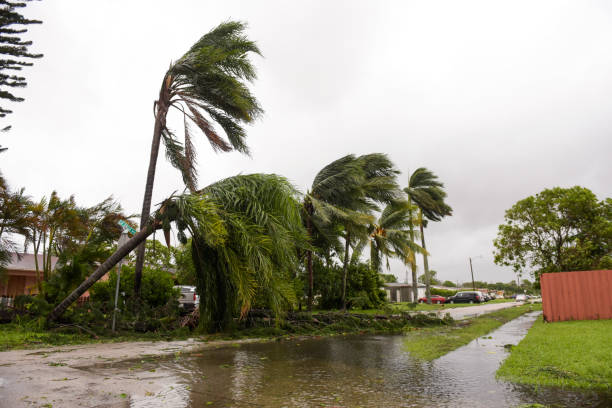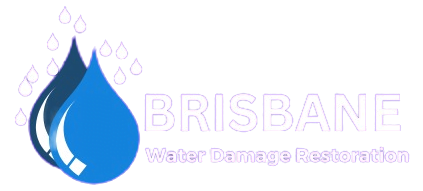Storms can be devastating, leaving behind widespread damage that impacts not only your property but also your peace of mind. Whether it’s from a sudden thunderstorm or more severe weather such as a cyclone, the aftermath can be overwhelming. However, understanding what to expect during the storm damage restoration process can make the recovery journey smoother and help you regain control over the situation.
Understanding Storm Damage Restoration
Storm damage restoration refers to the process of repairing and rebuilding a property that has been affected by severe weather conditions. This can include any type of damage caused by strong winds, heavy rainfall, hail, flooding, or even more intense phenomena like cyclones. The restoration process is crucial to ensuring that your property is safe, secure, and habitable once again.
Storm damage can affect various aspects of your home, from the roof and walls to plumbing and electrical systems. Timely and professional restoration can prevent further damage, reduce health hazards, and bring your property back to its original condition.

Step-by-Step Breakdown of the Storm Damage Restoration Process
1. Emergency Contact and Inspection
When storm and cyclone damage occur, the first step is to get in touch with a professional restoration company. Most reputable companies offer emergency response services 24/7, recognizing the urgency of the situation.
- Emergency Response: After contacting a restoration service, the team will usually arrive quickly to assess the damage. If the damage includes flooding, roof leaks, or other hazards, they will act immediately to secure the site and prevent further destruction. This might include boarding up windows, covering damaged areas with tarps, or temporarily sealing off leaks.
- Inspection and Assessment: The professionals will conduct a thorough inspection of your property. This involves checking for structural damage, moisture, electrical issues, and other potential risks. The goal is to create a detailed assessment of the damage so that an effective restoration plan can be developed.
2. Damage Mitigation
Once the damage has been assessed, the restoration team will begin mitigating the damage to minimize the risk of further harm. This can involve:
- Water Removal: If flooding is involved, water removal is one of the first priorities. Pumps, vacuums, and dehumidifiers are used to extract water from the property.
- Mould Prevention: High humidity levels, resulting from storm damage or flooding, can promote mould growth. The restoration team will act quickly to dry the area and treat surfaces to prevent mould infestations.
- Boarding Up and Tarping: For properties with roof damage or broken windows, the team may use tarps and boarding to protect your home from further damage.
3. Cleaning and Sanitization
After addressing the immediate risks, cleaning and sanitization become a priority. Storms can bring debris, contaminants, and other harmful materials into your home, so it’s important to thoroughly clean and disinfect all affected areas.
- Surface Cleaning: The team will clean and disinfect surfaces affected by dirt, debris, and bacteria.
- Restoration of HVAC Systems: If the storm caused damage to your heating, ventilation, or air conditioning systems, professionals will clean and sanitize the ducts to remove pollutants.
4. Repairs and Reconstruction
Once all mitigation, cleaning, and sanitization work are completed, the restoration process moves into repairs and reconstruction. Depending on the severity of the storm damage, this stage can range from minor repairs to major reconstruction.
- Roof Repair/Replacement: The roof is often the first area to be damaged by storms. The restoration team will repair or replace any missing shingles, tiles, or structural damage to prevent further water infiltration.
- Structural Repairs: Walls, flooring, windows, and doors may need repair or replacement. In some cases, extensive damage may require rebuilding entire sections of the property.
- Plumbing and Electrical Repairs: Storms can damage plumbing lines and electrical wiring. The restoration team will check for any leaks, broken pipes, or electrical hazards and repair them as needed.
5. Final Inspection and Restoration Completion
After all repairs are made, the team will perform a final inspection to ensure everything has been restored properly. They will also check for any lingering hazards and ensure that the property is safe and secure.
Once the final inspection is passed, the restoration process is complete. The home should now be restored to its pre-storm condition and ready to be inhabited once again.
How Long Does the Storm Restoration Process Take?
The timeline for storm damage restoration can vary depending on several factors:
- Extent of Damage: Severe storms, like cyclones, can cause widespread destruction, requiring more time to repair. Minor damage from less severe storms will generally take less time.
- Type of Repairs Needed: Small repairs can often be completed within a few days, while more significant structural work may take weeks.
- Availability of Materials: The availability of materials and the number of professionals needed to complete the work can also impact the timeline.
Generally, the process can take anywhere from a few days to a few weeks, but your restoration company will provide a timeline specific to your situation.
Tips for Homeowners During the Storm Damage Restoration Process
- Document the Damage: Before any repairs begin, take photographs and notes of the damage for insurance purposes.
- Avoid Re-entering the Property: If structural damage is severe, avoid entering the property until it is deemed safe by the restoration professionals.
- Communicate with Your Insurance Company: Keep your insurer informed throughout the restoration process to ensure your claim is processed smoothly.
- Stay in Touch with the Restoration Team: Regular communication with the restoration team ensures that you are updated on progress and any additional needs that may arise.
Conclusion
Storm damage restoration is a critical process that ensures your property is safe and habitable again after severe weather. Understanding the steps involved can help you navigate the process and make informed decisions. Whether you’re dealing with storm or cyclone damage, professional restoration teams can help you recover efficiently and effectively, minimizing both health risks and property damage.
By acting quickly, working closely with your restoration team, and understanding the necessary steps, you can get your home back to normal faster and with less stress. Always choose a reliable, experienced restoration company to ensure the best possible outcome for your property.
FAQ
Q1: How long does storm damage restoration take?
The restoration timeline varies depending on the severity of the damage. It can take anywhere from a few days to a few weeks. A professional restoration company will give you a more specific timeline after assessing the damage.
Q2: Is storm damage restoration covered by insurance?
In most cases, storm damage restoration is covered by home insurance, but it depends on your policy. Be sure to contact your insurance provider to confirm coverage and understand your deductible and claims process.
Q3: How can I prevent storm damage in the future?
To prevent future damage, ensure your roof is in good condition, check windows and doors for proper sealing, and maintain gutters and drainage systems to prevent flooding. Storm shutters can also help protect your home.
Q4: What are the signs that my property has storm damage?
Look for water stains, leaking ceilings, missing shingles, broken windows, and structural cracks in walls. If you notice any of these signs, contact a storm damage restoration professional immediately.
Q5: Can storm damage affect my health?
Yes, storm damage can lead to water damage, mould growth, and the spread of bacteria, which can negatively affect your health. Professional storm damage restoration helps mitigate these risks by cleaning and disinfecting affected areas.

